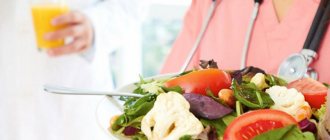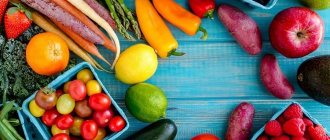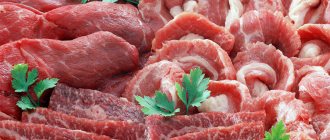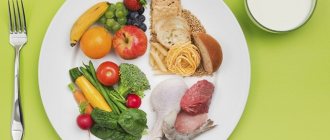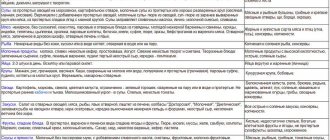In the twentieth century in Russia, gastroenterologist Professor Manuil Pevzner studied the influence of human diet to alleviate the course and treatment of various diseases. The result of many years of painstaking work was the creation of a series of therapeutic diets consisting of specially designed 15 tables. Each of the diets is intended for therapeutic nutrition of the patient depending on the disease and helps to quickly restore the body’s functioning.
The fifth diet is prescribed for liver diseases, impaired secretion of the digestive glands, and problems with the biliary tract. At different stages of diseases and complications, the composition of the diet may change. We’ll talk more about diet options No. 5, how to follow them, and the list of allowed and prohibited foods below.
Basic rules of the dietary table No. 5
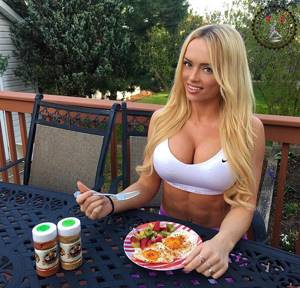
For a positive result, you must follow several rules that are provided for by this diet:
- You need to eat at least 5 times a day in small portions.
- Dishes can only be boiled, steamed, baked or stewed.
- All products that are enriched with fiber, as well as stringy meat, must first be ground.
- Cereals must be thoroughly boiled.
- Sauces are prepared without using toasted flour, but using vegetable broth or milk.
- The menu should mainly consist of products containing pectins, dietary fiber, lipotropic substances and liquids.
- Products that can cause fermentation or rotting in the intestines are not allowed.
The rules are quite strict, and most of them relate to the use of certain food products.
Table number 5b
In the treatment of chronic pancreatitis against the background of drug therapy, diet No. 5b (or 5 p31) is used. This option is used in patients at the recovery stage after an attack of acute pancreatitis or in the remission phase after an exacerbation of chronic pancreatitis. The list of products remains the same as for table 5a. The food served should be warm and well chopped. The main restrictions concern fatty foods and sugar, which is replaced with sweeteners, preferably stevia.
The following are strictly prohibited: alcoholic and carbonated drinks, caffeine, sweets, flour (except for dried wheat bread), smoked foods, fried foods, pickles, raw fruits and vegetables. Low-fat dairy products are added to dishes; pureed cottage cheese is allowed (preferably calcined).
The diet consists of 6-7 meals, in small portions. The patient should eat a little food every 3-3.5 hours. Per day - approximately 1500 kcal. Everything is boiled, steamed or baked without crust while warm. Salt is limited (8 g per day).
The rest of the rules remain the same, as in previous versions of table No. 5. The main difference is more frequent meals and increased mechanical sparing. This option can be used for patients with concomitant chronic gastritis.
Allowed foods for diet No. 5
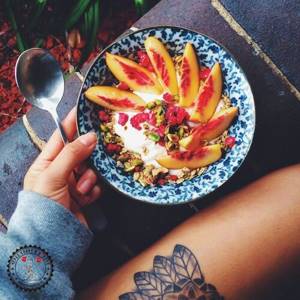
Despite such restrictions, the menu for every day of diet number 5 can consist of a variety of dishes. There are quite a few permitted foods within this diet plan:
- Low-fat varieties of fish and meat. In accordance with the rules of the diet, you can eat beef, chicken and turkey. However, beef is a rather stringy product, so it needs to be prepared in the form of a puree or soufflé. Chicken and turkey can be cooked whole, but should be eaten without the skin.
- Soups (vegetable, puree or cream soups). To prepare such dishes, vegetables should first be ground. You can use carrots, potatoes, pumpkin. Oatmeal, rice and semolina are excellent cereals. For dressing it is best to use sour cream or butter.
- Dairy products. If the main goal of the diet is the treatment of colitis and other gastrointestinal diseases, then it is better to use milk as one of the ingredients in dishes. It is allowed to use curd puddings or cheesecakes.
- Fruits and berries. These products can be an alternative to sweets. However, they can only be consumed in grated, boiled or baked form. It is also allowed to prepare mousses or jelly based on them. Dried fruits must be thoroughly ground.
- Honey or jam. In small quantities, these products can also be eaten instead of sugar.
- Eggs. In this diet, they can be used mainly for making protein omelettes. No more than 1 piece of yolk should be eaten per day.
- Vegetables. It is recommended to use boiled pieces of zucchini or pumpkin. You can make mashed potatoes from boiled cauliflower, grind carrots and beets.
- Butter. Used only as a salad dressing.
- Coffee, tea and juices. Sweet juices must be diluted with water beforehand. It is recommended to drink rosehip infusion or tea with lemon more often. Coffee should be weak and always have milk added.
Menu design principles
The fifth table diet is one of the most universal healing systems. It is prescribed for gastritis, colitis, gallbladder and liver diseases. The menu for week 5 of diet 5 is based on gentle foods that do not irritate the mucous membranes, are quickly absorbed, and have a therapeutic effect. Essential oils, smoked meats, dried and fried foods are completely excluded.
What else to pay attention to when building a menu:
- salt restriction. 5-6 g per day is enough for an adult. In order not to exceed, it is recommended to prepare food at home, salt the dish directly in the plate;
- reduction of fats. Vegetable oil and butter are allowed. The reduction occurs due to refractory animal fat, trans fats, margarine, lard, and other “slag” types;
- gentle cooking. No frying, below is the menu for the week for table No. 5 with dishes, recipes, cooking features;
- reducing portions. It is important not to convey, it is better to eat more often. It is not recommended to take more than 350 ml at a time;
- reducing foods with purines. These are offal, mushrooms, yeast, caviar, shrimp, mussels, meat. All this is either eliminated or reduced to 1–2 times a week (depending on the severity of the condition);
- reduction of sugar. It is not excluded, like honey, but it is important not to overuse it. Sugar is also an irritant to mucous membranes;
- grinding products. Hard food should be ground and beaten.
The weekly menu for therapeutic diet number 5 includes five meals, which can be added if necessary. It is important not to take long breaks. Dinner two hours before bedtime. When you feel hungry, you can drink kefir, tea, or water, which should be at least two liters daily.
The average calorie content for a person on this diet is 2400 kcal, and no more than 80 g of fat should be consumed daily. Men are allowed to eat 2800 kcal.
Prohibited foods on diet No. 5
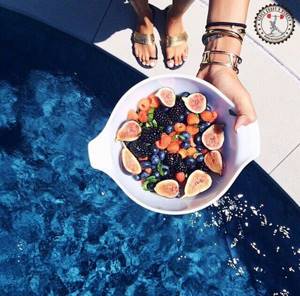
Diet 5 for a week at home should not contain the following products:
- Meat, fish or mushroom fatty and strong broths.
- Fresh bread, buns.
- Canned and smoked products.
- Fried, chunky meat.
- Fatty fish and meats, caviar.
- Spicy and salty cheeses.
- Cottage cheese with high fat content.
- Egg dishes, except omelettes.
- Mushrooms and legumes.
- Garlic, onion, sorrel, radish and cabbage.
- Crumbly porridge.
- Chocolate and ice cream.
- Pickles and marinades.
- Black coffee without milk, soda and cocoa.
- Spices and snacks.
For what diseases is it prescribed?
The diet is aimed at normalizing the functioning of the digestive organs, which are associated with the production and secretion of bile. This includes the liver, gallbladder and its ducts, and pancreas.
This therapeutic diet is indicated for the following diseases:
- chronic hepatitis;
- liver cirrhosis (in the absence of liver failure);
- chronic cholecystitis (inflammation of the gallbladder);
- gallstones;
- pancreatitis;
- gastroduodenitis;
- recovery period after removal of the gallbladder.
Sample menu for every day of diet 5

Invites you to familiarize yourself with the approximate diet for each day that this diet provides. You can add or remove permitted products, certain products within the rules. The menu is designed for 7 days, with a total of 6 meals (breakfast, afternoon snack, lunch, snack, dinner and second dinner).
Day No. 1
- An omelette of two proteins, rice porridge + a spoon of butter, weak tea with lemon;
- Low-fat cottage cheese casserole;
- Soup from grated vegetables, soufflé from boiled meat, stewed carrots, compote;
- Weak tea with honey;
- Macaroni and cheese, still water;
- One glass of kefir (2.5% fat).
Day No. 2
- Meat cutlets with milk sauce, grated carrot salad, weak coffee with milk;
- Apple;
- Potato soup, berry jelly, stewed beets with boiled lean fish;
- Rose hip decoction;
- Buckwheat porridge with water, still water;
- A glass of kefir.
Day #3
- Low-fat cottage cheese + two tablespoons of sour cream, rice (boiled), weak tea, oatmeal with milk;
- Baked apple;
- Boiled chicken breast (150 g), rice porridge, vegetable soup, dried fruit compote;
- Fresh juice;
- Fish cutlet (steamed), mashed potatoes, milk sauce and rosehip broth;
- A glass of kefir.
Day No. 4
- Pasta and beef (grid and cook);
- Lazy dumplings;
- Vegetable soup from mashed potatoes, cabbage rolls, jelly;
- 2-3 soft fruits;
- Rice porridge with milk with a spoon of butter, weak tea;
- Kefir (1 glass).
Day No. 5
- Weak coffee with milk, low-fat cottage cheese, buckwheat with water;
- Apple (baked);
- Boiled meat soufflé, pasta and jelly;
- Weak tea with honey and milk;
- Boiled fish (150 g), mashed potatoes, vegetable salad, still water;
- Kefir (1 glass).
Day No. 6
- The tea is weak, steamed meat cutlets, boiled buckwheat;
- Carrot puree, apple jam;
- Milk soup with spaghetti, curd pudding, compote;
- Kissel (1 glass);
- Semolina porridge with milk, still water;
- Kefir (1 glass).
Day No. 7
- Weak tea with milk, rice porridge with water;
- Apple (baked);
- Steamed meat cutlets, pasta, vegetable soup, compote;
- Rose hip decoction;
- Steamed egg white omelette, cheesecakes, still water;
- Kefir (1 glass).
As you can see, the menu is quite rich, and you are unlikely to suffer from lack of food and hunger. If you do everything correctly, you can not only achieve an ideal figure and get rid of fat, but also normalize the functioning of the intestines and gastrointestinal tract.
The essence of the diet
Table 5sch sets the goal of organizing maximum chemical sparing of the liver and normalizing its functions, as well as tidying up the biliary system and reducing the intensity of bile secretion.
The diet has a low energy value of 2100 calories, which is limited by reducing easily digestible carbohydrates and fats. Low calorie content is one of the key elements of treatment, since the body is simply not able to fully absorb nutrients in the conditions of postcholecystectomy syndrome.
The chemical composition of the diet is as follows:
- 300 grams of carbohydrates (10% simple);
- 90 grams of protein (80% animal origin);
- 60 grams of fat (vegetable fat excluded).
Table 5 provides for lean nutrition. The amount of table salt is minimized to 6 grams per day, of which only half is allowed as a seasoning, and the rest is supposed to be obtained from foods.
The volume of free liquid during the diet should be at least 1.5 liters, which must be consumed separately from main meals.
In addition to chemical sparing, the table excludes thermal irritants. Eating hot (above 60 degrees) and cold (below 15 degrees) food is prohibited. All food and drinks must be at room temperature.
Recipes for every day of the “Table 5” diet

So that you know what delicious things can be prepared from permitted products, we will now look at the menu for the week with recipes and how to prepare the “Table 5” diet. These are very effective, tasty and simple dishes to prepare.
Diet potato soup
Ingredients:
- Potatoes – 2 pcs.;
- Carrots – 1 pc.;
- Rice – 120 g;
- Onion – 1 pc.;
- Broccoli – 60 g;
- Salt.
To prepare, you need to peel the potatoes, cut them into cubes and put them in a pan with water. Add chopped onion and rice (rinse first) and place on the stove. The carrots should be grated and added to the soup at the same time as the broccoli. Cook the dish over low heat. The readiness of the soup can be judged by the rice and vegetables. Before turning off, add salt to taste, and before the meal - a little vegetable oil and herbs.
Beef meatballs
Ingredients:
- Beef – 150 g;
- Milk – 50 ml;
- Sour cream – 25 g;
- Butter – 5 g;
- Prunes – 15 g.
Beef meat needs to be minced several times. Prunes need to be cut into thin noodles, after removing the seeds from them. Ready minced meat is seasoned with milk, prunes and eggs. The mixture needs to be mixed thoroughly and made into several balls. You need to bake the meatballs in the oven. Before the dish is ready, the balls are filled with sour cream.
Carrot cheesecakes
Ingredients:
- Carrots – 2 pcs.;
- Low-fat cottage cheese – 150 g;
- Flour – 50 g;
- Semolina – 1 tsp;
- Butter – 1 tbsp. l.;
- Sugar – 1 tbsp. l.;
- Egg – 1 pc.
You need to grate the carrots and add semolina to it. The mixture is cooled and a raw egg, flour, cottage cheese and salt are added to taste. All ingredients are mixed, and then cheesecakes are made from the finished mixture. You need to cook in the oven.
Alcohol and feasts
As for alcohol, it is best to abstain from drinking it altogether. In exceptional cases, you can allow yourself 1 glass of weak wine. Strong alcohol (vodka, cognac, etc.) must be excluded once and for all.
During holiday feasts (especially if you are invited to visit and you are not able to organize a dietary table for yourself), you must still adhere to the recommended diet. By excluding from it all fatty, fried, spicy foods. This is a necessary measure to maintain health. And the momentary weakness associated with eating these tasty but harmful dishes can lead to certain digestive problems in the future. Agree, the risk is completely unjustified.
Some advice from nutritionists

We have analyzed the menu for every day and recipes for diet table 5. It is worth noting that this is more of a therapeutic nutrition plan, aimed at eliminating digestive problems. It is better to switch to such a diet after consulting a doctor. In itself, it is not a panacea for diseases, and can only relieve complications in combination with medication and physiotherapeutic treatment.
By following all the rules of this diet, you can quickly relieve exacerbations and normalize the functioning of the digestive system. You need to be careful and follow all doctor's instructions. If the instructions say that you cannot eat rough food, then you must grate it. Otherwise, there will be no therapeutic effect from the diet.
This therapeutic diet is very effective and can help get rid of many diseases. Surprisingly, this diet allows not only to relieve exacerbation, but also to improve the general condition of the patient. Against the background of normalization of digestive processes and stomach function, other goals can be achieved. Thus, there is a decrease in weight and subcutaneous fat, an increase in overall tone and an improvement in well-being.
Nutritionists give several tips, following which you can achieve the desired result from this diet:
- It is strictly forbidden to consume prohibited foods. This applies both to the diet itself and after it.
- You need to completely forget about the existence of smoked meats, spicy seasonings and alcohol. Otherwise, there is no need to talk about the health-improving effect of the diet on the liver.
- Ensure sufficient protein in the diet. Protein should be complete and quickly digestible.
- Do not exceed the permissible amount of fat. To do this, simply exclude all fatty foods from your diet. Cottage cheese, sour cream, as well as meat and fish products should be low-fat.
- To combat excess weight, we cut down on the amount of carbohydrates.
- All hard foods need to be twisted through a meat grinder, grated or finely chopped. In such a gentle mode, it will be easier for the internal organs to process food.
- You need to eat 6-7 times a day. Fractional meals should be divided into small portions.
- To increase the choleretic effect, add more fiber-rich foods to your diet.
This diet was originally intended to treat exacerbation of liver and biliary tract diseases. It is effective in the treatment of gastritis and colitis, and helps to achieve remission in a short time. By following all the rules described in the articles and recommendations given by nutritionists, you can not only normalize the functioning of your internal organs, but also lose excess weight.
15 510
Did you like the article? Share with friends:
We recommend reading:
Kefir diet for 7 days minus 10 kg – reviews
Diet for losing weight on the abdomen and sides for women - menu for the week
Japanese diet for 14 days - menu and diagram
Seven petals diet - menu for every day
Kremlin diet – reviews and results with photos
Discussion:
- Vitalyk says:
This is primarily a therapeutic diet, but on it I lost 4 kg in two weeks. The dishes are, of course, a little bland, but overall not bad. I was treating my gall bladder patient, and the doctor recommended just such a diet. A nice bonus was getting rid of fat in some places)) - Valeria says:
She was treated for calculous cholecystitis using this diet. It really works, but it still lacks something fried, spicy and fatty. It was difficult for me to sit on it, but I was pleasantly surprised when a month later they told me that I had lost a lot of weight and became slender.
- Olga26 says:
I had a similar menu for every day of diet table 5. At first it was difficult to follow it, not only because of the food restrictions. I constantly had to chop and grate food, prepare soups and soufflés. Then I got used to it. I lost 5 kg, and my gall bladder problems went away.
- Carina says:
I don't think this diet is suitable for everyone. It is medicinal and can only be done with the permission of a doctor. If you want to lose weight, buy the FFB training manual. It's popular now, I got it for myself too. Now I’m losing weight using it, and it’s turning out very well.
- Svetik says:
I studied your menu for the week with recipes and how to prepare diet table 5. I would like a few more recipes. For example, how to make a soufflé from meat. I have no idea what it is or how. I also seem to be developing gastritis, and I would like to lose weight and improve my health at the same time.
- Kirochka says:
This diet is not initially for weight loss, even though everyone writes about losing weight. If there are no health problems, it is better to do everything according to a different scheme. Buy the FFB method, read and understand how to lose weight correctly. There's really nothing complicated there. It helped me a lot, I get rid of excess fat without harm to my health.
- Poly21 says:
I used this diet to cure stomach problems. This diet doesn’t taste very good: everything is bland. But she lost 2 kg in a week. I periodically change the menu for the week and recipes for the 5 table diet so that there is variety and I don’t get bored.
- Xeniya says:
Girls, this is unlikely to help you lose weight in the long term. You won’t be on this diet all the time. I bought the FBB manual, and for a month now my entire lifestyle has been based on what is described there. I get rid of fat, become slim without much sacrifice, losing weight gives me pleasure.
- Pasha says:
I have always loved spicy, fried and fatty foods. I couldn’t live without it until I got gastritis. The doctor insisted on this diet and offered me a menu for a week of the Table 5 diet. I barely survived 10 days of this diet, but my stomach began to work normally, and the pain stopped. There was weight loss, but not much.
- Zarina says:
A good diet and menu for those who have digestive diseases but want to lose weight. My health is fine, I bought the FFB training manual. Now I eat very tasty, exercise and lose weight without any stress at all. No trainers or newfangled diets are needed.
- Zhenya says:
It turns out I tried this diet when I was a child. As a child, I suffered from jaundice and in the hospital I ate exactly this menu. I can’t say how it affects fat, but that’s for sure that it heals the body.
- Icub says:
A year ago I was just looking for a diet that would heal my stomach and lose weight normally. At that time there was no normal menu for the week with recipes and how to prepare diets Table 5. We had to do everything ourselves. But in a month I then lost 5 kg, and the functioning of the gastrointestinal tract returned to normal.
- Farida says:
If you really want to lose weight and keep your weight in ideal condition, then it is better to buy the FFB training manual. Read it and you won't need these diets. Table 5 is more of a therapeutic technique, and it is not intended for weight loss. With the training manual, I have already lost almost 10 kg, and I didn’t have to invent anything new.
- Lilya says:
Please share who cooks for you or when you cook all this. Work, farming (12 acres), a school-aged child, a husband who won’t put all this in his mouth, that is, he and the child need to cook separately. And theaters, cinema, walks, guests. Those. dedicate all the time to the kitchen. And to work, who will bring me pudding, jelly for frequent meals, etc. Please share, I will be very grateful.
- Julia says:
That's about it. How to have time to prepare all this when there is work, home, children, classes.
Table number 5a
Diet 5a according to Pevzner is prescribed during periods of exacerbation of pancreatitis, cholecystitis, and cholelithiasis. It is used in cases of combination of these diseases with gastritis and peptic ulcer. The diet ensures maximum rest for the liver and gall bladder, spares the gastrointestinal tract, and facilitates the functioning of the bile ducts.
This diet option differs from the fifth table in even greater mechanical and chemical sparing. All dishes should be soft, pureed, slimy and mushy. The list of products remains the same, only with greater restrictions.
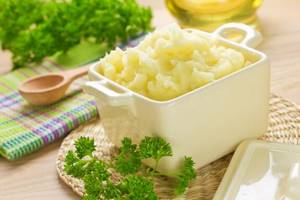
Soups should be light, with finely chopped or grated vegetables and pureed cereals. You can add boiled vermicelli and a little milk to them. Types with a high fiber content are excluded from fruits and vegetables; the consumption of quince and pear, as well as all varieties of cabbage, is not recommended.
Millet is prohibited from cereals. It is also not recommended to consume veal and young chickens. As for bakery products, it is preferable to eat no more than three pieces per day of dried bread made from second-grade flour. Desserts and drinks remain the same as in the previous version.
The menu for table 5a will consist of cereals, boiled vegetables, mashed potatoes (potatoes, meat) and vegetarian soups. You can prepare souffles, jelly, jellies, puddings, steamed cutlets and meatballs. It is important to eat the necessary proteins, fats and carbohydrates every day. It is forbidden to go hungry or eat too much.
Table 5a is prescribed until improvement occurs, then switches to another diet. It is strictly not recommended to independently adjust the diet during exacerbations of diseases.
“Table No. 5”: diet and daily diet.
One of the most important principles of this diet is fractional nutrition. “The best remedy to counteract stagnation of bile is frequent meals... every 3-4 hours,” wrote M. I. Pevzner. As for the energy value, “Table No. 5” is a complete diet (2500-2900 kcal per day) with an optimal content of proteins, fats and carbohydrates, with the exception of foods rich in purines, nitrogenous extractives and cholesterol, oxalic acid, essential oils, fat oxidation products formed during the frying process.
The diet is enriched with lipotropic substances (lean meat and fish, egg whites, low-fat cottage cheese), pectins (for example, apples), and also contains a significant amount of fiber and liquid.
The amount of protein in the diet should correspond to the physiological norm: 1 g per 1 kg of ideal body weight, of which 50-55% should be proteins of animal origin (meat, fish, poultry, eggs, dairy products).
The recommended amount of fat is 70-80 g. Animal fats should be 2/3, vegetable fats should be 1/3 of the total amount. The best animal fat to use is butter - it is easily digestible and contains vitamins A, K, and arachidonic acid. But the amount of refractory fats (lamb, pork, beef) must be limited: they are difficult to digest, contain a lot of cholesterol and saturated fatty acids, and can contribute to the formation of cholesterol stones and the development of fatty liver.
As for the amount of carbohydrates in the diet for patients with diseases of the liver and biliary tract, it has been revised several times. Initially, the “Table 5” diet contained 300-350 g of carbohydrates, of which 60-70 g were simple. Later, the amount of carbohydrates was reduced at the expense of simple ones (300-330 g in total, simple ones - 30-40 g).
Currently, Pevzner tables are not used in medical institutions: according to order No. 330, since 2003 in Russia, instead of a numbered one, a numberless system of treatment tables in hospitals has been introduced - it includes 6 options for standard diets
